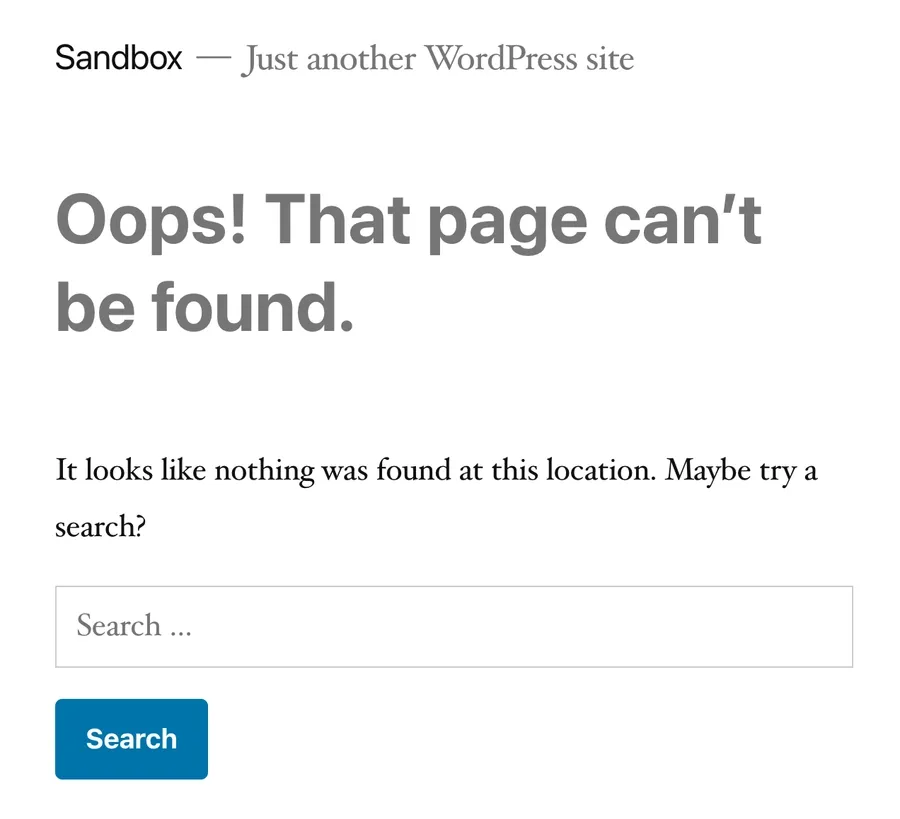jesse
there is an error in the "Whitelist the Custom Query Var". Add_filter close is )); needs to be });
It’s surprisingly a big pain to create a route and render a static template in WordPress without messing with the database. For example, let’s say you’d like to create a static “/error” page, and there’s no desire to have any of the content editable. You just want a particular template to render at that route every time.
If you give this sort of thing a Google search, you’ll find a lot of results on setting up a “static” front page (requiring a setting to be toggled in the WP admin), or using page-*.php templates for specific pages, which also require the pages to first exist in the database.
But what if you want to create and render content for a route entirely in PHP — 100% programmatically? It’s not straightforward (WordPress simply doesn’t lend itself best to registering routes in this way), but it’s not as complicated as you might think.
For this breakdown, we’re going to register a route at /a-static-page , and have it render YOUR_THEME_DIRECTORY/static-templates/a-static-template.php. If I navigate to that page on my local “sandbox” instance of WordPress (I’m using the twentynineteen theme, by the way), I’ll expectedly get a 404:

In order to pull this off, we’ll rely on three distinct WordPress hooks. At the most basic level, these can all be placed in a theme’s functions.php file.
First, let’s create a rewrite rule that’ll attempt to match against a particular request path, and then rewrite that path into one that WordPress will use to parse and render a page. Let’s start with this:
add_action('init', function () {
add_rewrite_rule('a-static-page/?$', 'index.php?static_template=a-static-template', 'top');
// Not required. Just here for easier local development.
flush_rewrite_rules();
});
When a request comes in with a path that resembles “/a-static-page,” we’re rewriting the path to include a static_template query variable, whose value is the particular page template we want to render — a-static-template.php. Right now, however, that new query variable is useless. It’ll get filtered out as the request is parsed later on, unless we deliberate whitelist it.
To do that, we’ll use the query_var filter, which will permit our static_template variable to be accessible when we choose to render a custom template (or not).
add_filter('query_vars', function($queryVars) {
$queryVars[] = 'static_template';
return $queryVars;
));
There isn’t much to this piece. The query_vars filter provides us the permitted query variables. We’re just tacking a custom one on the end. With that in place, we’re able to use the variable to maybe render a particular template.
From here on out, it’s just a matter of setting up some logic. We’ll check for our query variable. If it’s set, return the respective page template. If it’s not, return whatever template would’ve been rendered to begin with.
add_action('template_include', function($template) {
$staticQueryVarValue = get_query_var('static_template');
if(!empty($staticQueryVarValue)) {
return get_stylesheet_directory() . "/static-templates/{$staticQueryVarValue}.php";
}
return $template;
});
If you refresh that page now, you’ll should see the content within a-static-template.php :

Obviously, this is a pretty contrived example. In a real-life case, there may be a bit more complicated logic to wade through, and you could also clean this up a bit, like always naming the custom templates after the static paths you’re registering. Whatever the case, this should provide enough of a foundation to get you moving in the right direction a little faster.
Get blog posts like this in your inbox.
May be irregular. Unsubscribe whenever.there is an error in the "Whitelist the Custom Query Var". Add_filter close is )); needs to be });
do you have an example of your static template, does it utilize the sidebar and the header / footer / theme styles still?
Cool. I'm goint to test play with this later.
Thanks.
Awesome, hope it helps!